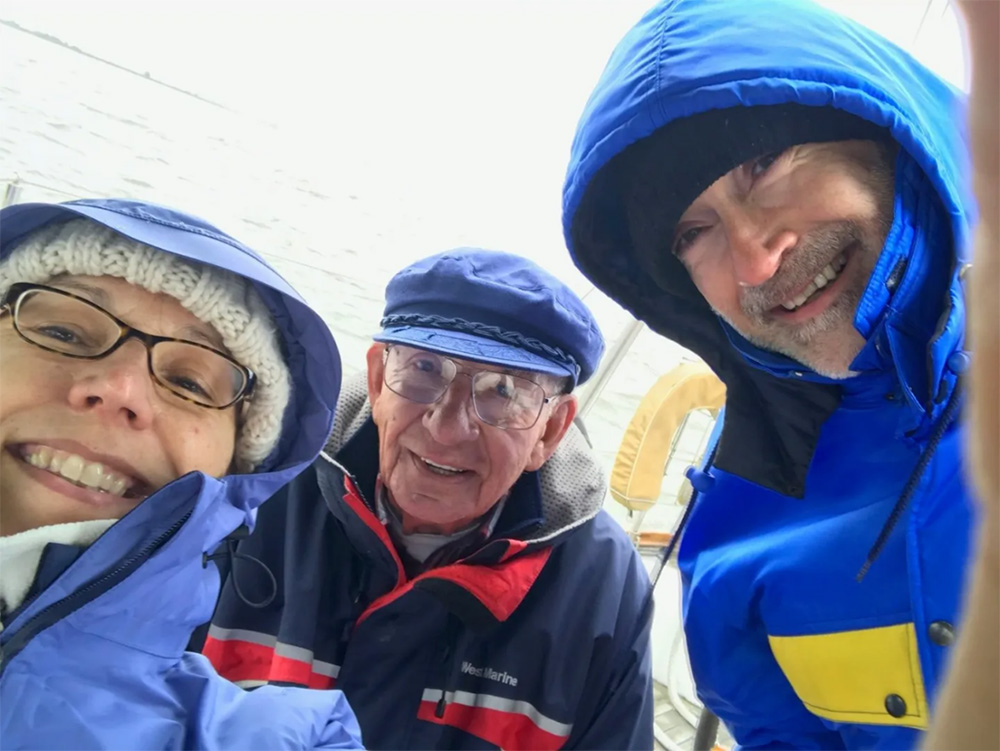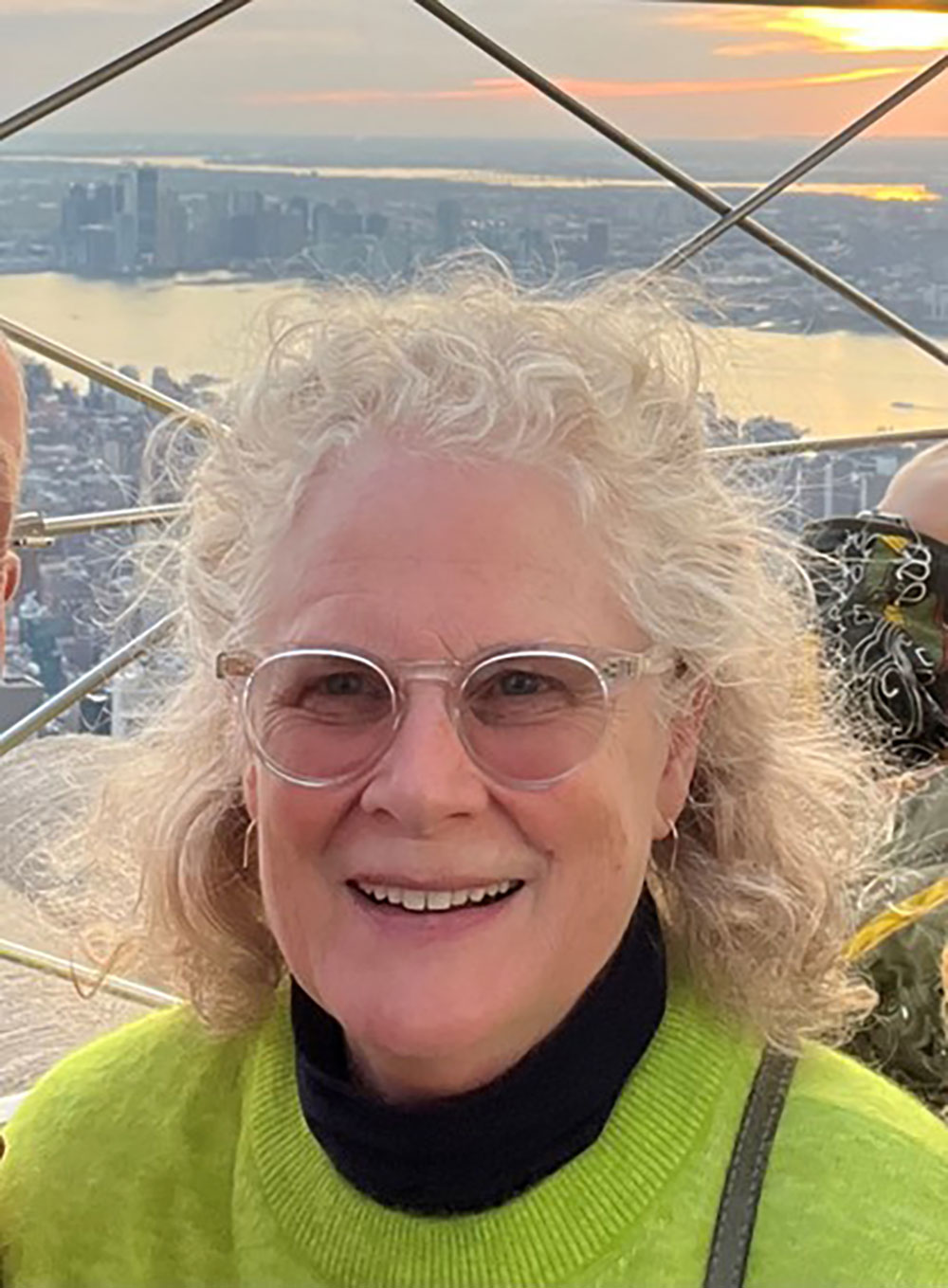
退休是許多美國人焦慮的來源,年長的上班族擔心他們還沒有做好準備就被迫離開職場,而年輕的上班族根本不相信自己能夠負擔退休生活。但許多受過大學教育的嬰兒潮一代正在打破陳規,按自己的意愿重新定義以什么方式和在什么時候退休,這種趨勢可能對未來職場產生重大影響。
當然,美國人的工作和退休方式不能一概而論。有些人能夠在65歲的時候退休,然后去旅游和追求業余愛好,無需擔心財務狀況,但許多人卻根本無法完全退休。有些人希望或者需要繼續工作,卻被雇主勸退,有些人的目標卻是在五十幾歲甚至更早退休,盡快離開傳統工作。
階段性退休是一種不同的方式,而且一些報告認為,這可能是一種日益流行的趨勢。階段性退休并不是突然退休,即在公司工作了40年后,第二天立刻離開公司,相反,上班族可以選擇逐漸減少工作時間和減輕壓力,同時還能繼續賺取收入和保持人際關系。支持者們認為,這種方式不僅能夠幫助員工從心理和財務上完成向退休的過渡,也對雇主有益。
Principal公司退休與收入解決方案總裁克里斯·利特菲爾德之前曾對《財富》雜志表示:“公司都面臨招聘和留住人才的難題,因此公司必須努力留住現有的人才——這樣做更有效、更高效且更有成效。這是職場的大趨勢。在未來十年,這將成為公司可以利用的一個極其重要的工具。”
階段性退休在實踐中如何執行?三位接近或已經過了傳統退休年齡的嬰兒潮一代,向《財富》雜志講述了他們理想中的階段性退休計劃。
“你能在沙灘上躺多久?”

姓名:喬治·卡維登
年齡:73歲
地點:新罕布什爾州
喬治·卡維登在零售業工作了數十年,他在五十多歲的時候賣掉自己的公司后退休,這是許多上班族的夢想。但卡維登很快發現,他并不適應提前退休的生活,他懷念那些白天有地方(而不是高爾夫球場)可去的日子。于是,他后來重回職場,在一家小型營銷公司找到了一份新工作。他在這家公司工作了18年,并沒有在近期內退休的打算。
卡維登說道:“我正在嘗試減少工作時間。在73歲的年紀,我的精力已經大不如前。但我喜歡我的工作,我喜歡到公司和同事們一起工作。我喜歡社交。”
對于卡維登而言,他現在的工作安排是理想的。他不必待在家里,但又能靈活安排自己的辦公時間。他在零售業的第一份職業中從來沒有享受過這種靈活性。他表示,因為他從事的是銷售崗位,要與客戶見面,因此他能保持思維敏捷,而且與更年輕的同事交流,讓他可以了解本來可能錯過的最新趨勢和視角。
卡維登承認其工作方式不適合所有人。他有許多朋友已經退休,并搬到了氣候更溫和、休閑活動更多的佛羅里達等州。但他表示,不管好壞,他的身份認同有一部分與他的工作密切相關。最終他的工作時間會從每周五天縮減到每周三天,但他現在還沒有這樣做。而且有收入并不是壞事。
他說道:“退休對我來說是一件可怕的事情。你能在沙灘上躺多久?為了我的身心健康,我喜歡保持活躍,繼續工作。”
“我將完全掌控自己的時間。”

姓名:蕾妮·斯坦頓
年齡:61歲
地點:新澤西州
階段性退休是蕾妮·斯坦頓的目標,她的整個職業生涯都在從事IT相關工作。她不打算徹底離開勞動力隊伍,但她希望能夠靈活辦公,讓自己可以在旺季去滑雪和航行(這兩項運動是她的畢生摯愛),還能陪伴已經成年的孩子和衰老的父母。斯坦頓自稱是一位“沮喪的藝術家”,她預計將在父親的藝術工作室里度過更多下午時光。
61歲的斯坦頓表示:“消磨時間對我來說不成問題,我的問題是找到時間去做我想做的所有事情。有人說你必須要有退休目標。我的退休目標是……他們能為80歲及以上的滑雪愛好者提供前排停車位。我的目標是能夠在那里停車。”
雖然她已經有足夠的資金和熱情支持她現在退休,但斯坦頓表示,作為家具木匠的父親在六十多歲時退休的經歷,給她帶來了教訓。她的父親今年87歲,而且身體健康,他認為自己過早離開了勞動力隊伍,如果繼續工作更長時間,就能獲得更多財務收益。她到父親現在的年紀還有幾十年時間,因此她在財務上“非常謹慎”。
她計劃大幅減少工作時間,并從事承包商崗位,這讓她可以根據自己的情況工作和休假。她說道:“我將完全掌控自己的時間。”她的退休金和社會保障金會繼續增長,而且由于她還要再過幾年才能享受到醫療保險(Medicare)計劃,因此她需要賺足夠的錢支付醫療保險和滑雪通票的價格。
斯坦頓說道:“我是時候退后一步,規劃更多享受生活的時間。我依舊希望工作,賺取一些收入。雖然我的儲蓄支持退休,卻不能支持滑雪成癮的退休生活。”
“我不會在某一天徹底停止工作。”

姓名:喬伊·W
年齡:66歲
地點:紐約州
喬伊·W在50歲時取得了心理學碩士學位。她要求不透露自己的姓氏,以便于自由討論她的職業規劃。現年66歲的喬伊長期從事人力資源工作。她決定從事一份更符合幫助他人這一愿望的副業。心理學碩士學位點燃了她內心的火焰。幾年后,她又取得了社會工作碩士學位。她現在是康涅狄格州鄉村地區的一名全職心理治療師,客戶的年齡從25歲到95歲,但許多人都已經退休。
這份工作讓喬伊意識到,她并不想徹底停止工作,盡管她和丈夫衣食無憂,而且自己也過了傳統退休年齡。但她開始減少工作量,從每周工作五天改為四天。
喬伊說道:“每次考慮結束自己的職業生涯時,我會設想利用自己的技能,從事一些志愿者工作。我不會在某一天徹底停止工作。我會繼續做一些事情。這很有趣,能激發我的靈感,而且我的工作有巨大的需求。”
她的客戶也影響了她繼續工作的決定。她說,她的許多客戶都對退休有些后悔,后悔的原因通常都是太早退休。與他們的交流驗證了她“以曲折的路線實現階段性退休”的想法。
她說道:“他們沒有準備好迎接退休后第一天醒來的感受。他們不知道如何度過退休生活,這讓他們感到意外。”
她的許多家庭成員,包括父親和幾位兄弟姐妹,都是被公司“強制退休”,這也影響了她對待工作的態度。喬伊希望能自主選擇,而且她表示,轉行的一個好處是她“從最開始就掌握了主動權”。她當前的雇主一開始就知道她不打算長期全職工作。雇主對她的加盟很高興。
她說道:“這種感覺非常自由。至少在我看來,它降低了我的焦慮程度,而且可能也讓他們不再感到焦慮。我們都知道彼此的立場。”
您的退休預算是多少?《財富》雜志正在調查不同收入水平的美國人的退休支出情況。歡迎發送電子郵件至[email protected],聯系資深撰稿人艾麗西亞·亞當奇克,分享您的故事。(財富中文網)
翻譯:劉進龍
審校:汪皓
(從左到右)蕾妮·斯坦頓和父親比爾·艾米奈克爾,以及丈夫特雷·斯勞。
退休是許多美國人焦慮的來源,年長的上班族擔心他們還沒有做好準備就被迫離開職場,而年輕的上班族根本不相信自己能夠負擔退休生活。但許多受過大學教育的嬰兒潮一代正在打破陳規,按自己的意愿重新定義以什么方式和在什么時候退休,這種趨勢可能對未來職場產生重大影響。
當然,美國人的工作和退休方式不能一概而論。有些人能夠在65歲的時候退休,然后去旅游和追求業余愛好,無需擔心財務狀況,但許多人卻根本無法完全退休。有些人希望或者需要繼續工作,卻被雇主勸退,有些人的目標卻是在五十幾歲甚至更早退休,盡快離開傳統工作。
階段性退休是一種不同的方式,而且一些報告認為,這可能是一種日益流行的趨勢。階段性退休并不是突然退休,即在公司工作了40年后,第二天立刻離開公司,相反,上班族可以選擇逐漸減少工作時間和減輕壓力,同時還能繼續賺取收入和保持人際關系。支持者們認為,這種方式不僅能夠幫助員工從心理和財務上完成向退休的過渡,也對雇主有益。
Principal公司退休與收入解決方案總裁克里斯·利特菲爾德之前曾對《財富》雜志表示:“公司都面臨招聘和留住人才的難題,因此公司必須努力留住現有的人才——這樣做更有效、更高效且更有成效。這是職場的大趨勢。在未來十年,這將成為公司可以利用的一個極其重要的工具。”
階段性退休在實踐中如何執行?三位接近或已經過了傳統退休年齡的嬰兒潮一代,向《財富》雜志講述了他們理想中的階段性退休計劃。
“你能在沙灘上躺多久?”
喬治·卡維登和他的愛犬Lily。
姓名:喬治·卡維登
年齡:73歲
地點:新罕布什爾州
喬治·卡維登在零售業工作了數十年,他在五十多歲的時候賣掉自己的公司后退休,這是許多上班族的夢想。但卡維登很快發現,他并不適應提前退休的生活,他懷念那些白天有地方(而不是高爾夫球場)可去的日子。于是,他后來重回職場,在一家小型營銷公司找到了一份新工作。他在這家公司工作了18年,并沒有在近期內退休的打算。
卡維登說道:“我正在嘗試減少工作時間。在73歲的年紀,我的精力已經大不如前。但我喜歡我的工作,我喜歡到公司和同事們一起工作。我喜歡社交。”
對于卡維登而言,他現在的工作安排是理想的。他不必待在家里,但又能靈活安排自己的辦公時間。他在零售業的第一份職業中從來沒有享受過這種靈活性。他表示,因為他從事的是銷售崗位,要與客戶見面,因此他能保持思維敏捷,而且與更年輕的同事交流,讓他可以了解本來可能錯過的最新趨勢和視角。
卡維登承認其工作方式不適合所有人。他有許多朋友已經退休,并搬到了氣候更溫和、休閑活動更多的佛羅里達等州。但他表示,不管好壞,他的身份認同有一部分與他的工作密切相關。最終他的工作時間會從每周五天縮減到每周三天,但他現在還沒有這樣做。而且有收入并不是壞事。
他說道:“退休對我來說是一件可怕的事情。你能在沙灘上躺多久?為了我的身心健康,我喜歡保持活躍,繼續工作。”
“我將完全掌控自己的時間。”
蕾妮·斯坦頓和丈夫特雷·斯勞熱愛滑雪。
姓名:蕾妮·斯坦頓
年齡:61歲
地點:新澤西州
階段性退休是蕾妮·斯坦頓的目標,她的整個職業生涯都在從事IT相關工作。她不打算徹底離開勞動力隊伍,但她希望能夠靈活辦公,讓自己可以在旺季去滑雪和航行(這兩項運動是她的畢生摯愛),還能陪伴已經成年的孩子和衰老的父母。斯坦頓自稱是一位“沮喪的藝術家”,她預計將在父親的藝術工作室里度過更多下午時光。
61歲的斯坦頓表示:“消磨時間對我來說不成問題,我的問題是找到時間去做我想做的所有事情。有人說你必須要有退休目標。我的退休目標是……他們能為80歲及以上的滑雪愛好者提供前排停車位。我的目標是能夠在那里停車。”
雖然她已經有足夠的資金和熱情支持她現在退休,但斯坦頓表示,作為家具木匠的父親在六十多歲時退休的經歷,給她帶來了教訓。她的父親今年87歲,而且身體健康,他認為自己過早離開了勞動力隊伍,如果繼續工作更長時間,就能獲得更多財務收益。她到父親現在的年紀還有幾十年時間,因此她在財務上“非常謹慎”。
她計劃大幅減少工作時間,并從事承包商崗位,這讓她可以根據自己的情況工作和休假。她說道:“我將完全掌控自己的時間。”她的退休金和社會保障金會繼續增長,而且由于她還要再過幾年才能享受到醫療保險(Medicare)計劃,因此她需要賺足夠的錢支付醫療保險和滑雪通票的價格。
斯坦頓說道:“我是時候退后一步,規劃更多享受生活的時間。我依舊希望工作,賺取一些收入。雖然我的儲蓄支持退休,卻不能支持滑雪成癮的退休生活。”
“我不會在某一天徹底停止工作。”
66歲的喬伊在50多歲的時候開創了一份新事業。她沒有在短期內退休的計劃。
姓名:喬伊·W
年齡:66歲
地點:紐約州
喬伊·W在50歲時取得了心理學碩士學位。她要求不透露自己的姓氏,以便于自由討論她的職業規劃。現年66歲的喬伊長期從事人力資源工作。她決定從事一份更符合幫助他人這一愿望的副業。心理學碩士學位點燃了她內心的火焰。幾年后,她又取得了社會工作碩士學位。她現在是康涅狄格州鄉村地區的一名全職心理治療師,客戶的年齡從25歲到95歲,但許多人都已經退休。
這份工作讓喬伊意識到,她并不想徹底停止工作,盡管她和丈夫衣食無憂,而且自己也過了傳統退休年齡。但她開始減少工作量,從每周工作五天改為四天。
喬伊說道:“每次考慮結束自己的職業生涯時,我會設想利用自己的技能,從事一些志愿者工作。我不會在某一天徹底停止工作。我會繼續做一些事情。這很有趣,能激發我的靈感,而且我的工作有巨大的需求。”
她的客戶也影響了她繼續工作的決定。她說,她的許多客戶都對退休有些后悔,后悔的原因通常都是太早退休。與他們的交流驗證了她“以曲折的路線實現階段性退休”的想法。
她說道:“他們沒有準備好迎接退休后第一天醒來的感受。他們不知道如何度過退休生活,這讓他們感到意外。”
她的許多家庭成員,包括父親和幾位兄弟姐妹,都是被公司“強制退休”,這也影響了她對待工作的態度。喬伊希望能自主選擇,而且她表示,轉行的一個好處是她“從最開始就掌握了主動權”。她當前的雇主一開始就知道她不打算長期全職工作。雇主對她的加盟很高興。
她說道:“這種感覺非常自由。至少在我看來,它降低了我的焦慮程度,而且可能也讓他們不再感到焦慮。我們都知道彼此的立場。”
您的退休預算是多少?《財富》雜志正在調查不同收入水平的美國人的退休支出情況。歡迎發送電子郵件至[email protected],聯系資深撰稿人艾麗西亞·亞當奇克,分享您的故事。(財富中文網)
翻譯:劉進龍
審校:汪皓
(L-R) Renee Stanton with her father, Bill Emenecker, and husband, Trey Slough.
COURTESY OF RENEE STANTON
Retirement is a source of anxiety for many Americans, with older employees worried about being forced out of work before they are ready and younger generations less than convinced they will be able to afford to retire at all. But many college-educated baby boomers are flipping the script and redefining how and when they retire on their own terms, a trend that could have significant effects on the workplace for years to come.
Of course, there’s no single approach to work and retirement in the U.S.—while some are able to exit the workforce at 65 to travel and pursue hobbies without worrying about their finances, many others are never able to fully retire at all. Others who want or need to continue working are pushed out by employers, while some are set on leaving the traditional work world as soon as possible, with the goal to quit in their 50s, or even earlier.
Phased retirement is different still, and, according to some reports, could be a growing trend. Rather than a hard-stop retirement—here for 40 years, gone tomorrow—workers are given the option to gradually pare back hours and reduce stress while still earning income and maintaining connections. Proponents say it not only helps employees with the transition to retirement, both mentally and financially, but that it also benefits employers.
“Businesses are all struggling with recruiting and retaining talent, so you have to keep the talent you have—that’s a lot more effective, efficient, and productive,” Chris Littlefield, president of retirement and income solutions at Principal, previously told Fortune. “It’s a mega-trend in the workforce. It will be a very significant lever for them over the next decade.”
How does that work in practice? Here’s what three baby boomers approaching or past the traditional retirement age told Fortune about their ideal phased exit.
‘How much can you lay on the beach?’
George Cavedon, with his dog, Lily.
COURTESY OF GEORGE CAVEDON
Name: George Cavedon
Age: 73
Location: New Hampshire
After a decades-long career working in retail, George Cavedon retired in his fifties after his company was sold, a dream for many workers. But Cavedon soon found the early retirement life wasn’t for him; he missed having somewhere to go during the day that wasn’t a golf course, and Eventually, he joined the ranks of the unretired, and found a new job working at a small marketing firm. He’s been there for 18 years, with no intention of slowing down anytime soon.
“I’m trying to cut back. Being 73, my energy isn’t what it used to be,” Cavedon says. “But I enjoy what I do, I enjoy coming in and working with people. I’m a social kind of guy.”
For Cavedon, his current working arrangement is ideal. He gets out of the house but has some flexibility with his hours—something he was never allowed in his first career in retail. Because he works in sales and meets with clients in person, his mind stays sharp, he says, and talking with younger coworkers keeps him up-to-date on trends and perspectives he’d otherwise miss.
Cavedon recognizes his approach to work isn’t for everyone. He has plenty of friends who have retired and moved to states like Florida with warmer weather and more leisure activities. But for better or worse, he says part of his identity is tied up in his work. Eventually he’ll scale back to working three days a week rather than five, but not yet. And the money doesn’t hurt, either.
“Retirement to me is a scary thing. How much can you lay on the beach?” he says. “For my own personal mental health and well-being, I like being active and working.”
‘I’ll be in full control’
Renee Stanton and her husband, Trey Slough, love to ski.
COURTESY OF RENEE STANTON
Name: Renee Stanton
Age: 61
Location: New Jersey
Phased retirement is the goal for Renee Stanton, who has worked in IT-adjacent roles her entire career. She has no desire to leave the workforce completely but would appreciate the flexibility to go skiing and sailing—her lifelong passions—during the on-seasons, and to spend more time with her adult children and aging parents. A self-described “frustrated artist,” Stanton also foresees wiling away more afternoons in her dad’s art studio.
“It’s not a problem for me to fill my time—the problem for me is to find the time for all the things I want to do,” says Stanton, 61. “They say you have to have retirement goals. My retirement goal is…they have front-row parking for skiers 80 and above. My goal is to be parking there.”
Though she has enough money—and passions—to retire now, Stanton says she learned a lesson when her father, a cabinetmaker, retired in his sixties. Now 87 and going strong, he believes he left the workforce too early and could have benefitted financially from staying employed longer. With potentially decades ahead of her, she is being “extra cautious” with her finances.
She plans to reduce her hours significantly and move to a contractor role, so she can work when she wants to and take time off on her own terms. “I’ll be in full control,” she says. That will allow her pensions and Social Security payments to continue to grow, and because she still has a few years until Medicare coverage kicks in, she’ll need to earn enough to pay for her health insurance—and her ski passes.
“It’s time for me to take a step back and plan more time for fun,” says Stanton. “I still want to work and bring some money in. I saved for retirement, but not ski-addiction retirement.”
‘I won’t just drop out 100% one day’
Joy, 66, started a new career in her 50s. She doesn’t plan to retire anytime soon.
Name: Joy W.
Age: 66
Location: New York
At 50, Joy W., who asked that her last name be withheld to freely discuss her career plans, completed a master’s degree in psychology. A long-time human resources worker, Joy, now 66, decided to pursue a second act that better aligned with her desire to help people. That first degree lit a match, and a few years later, she also completed a master’s in social work. She now works as a full-time psychotherapist in rural Connecticut, with clients ranging in age from 25 to 95, but many who are post-retirement.
Through her work, Joy has realized she has no desire to stop working completely, though she and her husband are financially secure and she’s past the traditional retirement age. But she is beginning to scale back, working four days a week instead of five.
“When I think about ending my career, I imagine I’ll be doing some sort of volunteer work that takes advantage of my skills,” says Joy. “I won’t just drop out 100% one day. I’ll be doing something. It’s interesting, it’s stimulating for me, and there’s a huge need for it.”
Her clients also have influenced her choice to keep working. Many of them have some form of regret about retiring, she says, and it’s usually because they did so too soon. Talking with them validates her “zigging-zagging path toward phased retirement.”
“They weren’t ready for how they felt the day they woke up after retirement,” she says. “They didn’t know how to do retirement, and that took them by surprise.”
Many family members, including her father and some siblings, were “retired” by their companies, which also informs her approach to work. She wants to make the choice for herself, and one benefit of switching careers when she did, Joy says, is that she’s “been in the driver’s seat since the beginning.” Her current employer knew from the jump that she didn’t plan to work full time for long. They’re just happy to have her while they do.
“That felt really liberating,” she says. “It really lowered the anxiety level, at least mine, and probably theirs too. We each knew where the other stood.”
What is your retirement budget? Fortune is writing about what Americans at different income levels are spending in retirement. To share your story, email senior writer Alicia Adamczyk at [email protected].






